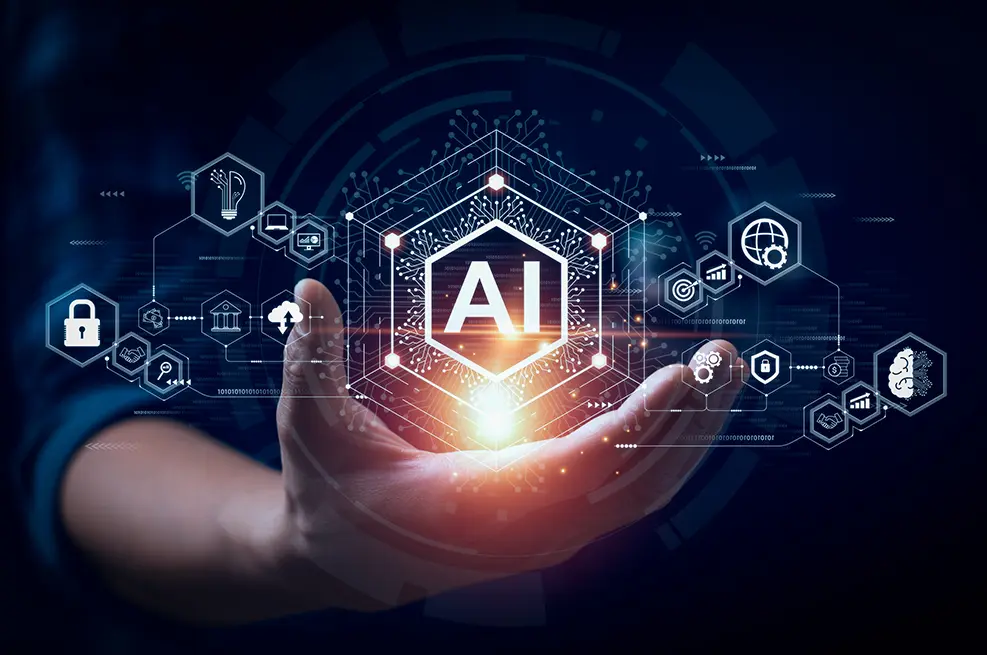Every tap, swipe, and scroll sends whispers of your identity across the web—encrypted or not, masked or not. Somewhere, someone’s watching. Or trying to. In an age where even toasters might betray you (thanks, smart home tech), protecting personal and organizational data is no longer a choice. It’s a race. And the finish line keeps moving.
Welcome to the digital age. Here, artificial intelligence isn’t just a buzzword. It’s the spear and shield—both the threat and the protector. And data security? It’s undergoing an AI-powered transformation you can’t afford to ignore.
The Growing Beast: Why Online Data Security Demands Reinvention
Let’s be blunt—cyber threats aren’t slowing down. In fact, Cybersecurity Ventures predicts global cybercrime costs will hit $10.5 trillion annually by 2025. Ransomware-as-a-Service? Real. Phishing bots with better grammar than your uncle? Also real. Even traditional firewalls are feeling outdated, like trying to stop a drone with a fishing net.
At the heart of the problem is volume. More devices. More data. More entry points. The average individual interacts with 150 digital services per month, from banking apps to fitness trackers. Each one is a potential breach.
So, how to secure data online in 2025?
Enter AI.
From Passive to Proactive: The Role of AI in the Digital Age
Traditional cybersecurity plays defense. AI, however, plays every position.
Machine learning models now predict attack patterns before they happen. Algorithms digest billions of data points daily—IP addresses, login attempts, behavioral trends. One deviation from the norm? Instant flag. Real-time response. No human needed.
Take AI-powered network security systems. They’re no longer experimental—they’re essential. They scan traffic, filter out malicious behavior, identify unusual access attempts, and even shut them down before escalation. It’s like having a bouncer who recognizes trouble before the guy even enters the bar.
In fact, 75% of cybersecurity professionals in 2025 report relying on AI tools to reduce response time by up to 90%, according to the latest report from ISC².
But AI doesn’t just watch for the bad guys. It also helps you build safer systems. Need encryption suggestions based on your specific vulnerabilities? AI’s got it. Curious about potential weaknesses in your current infrastructure? Ask your AI assistant—it’s probably already analyzing that.
AI and the Human Element: Not a Replacement, a Reinforcement
Let’s kill the myth: AI isn’t here to replace human cybersecurity professionals. Instead, it’s a force multiplier.
A single analyst can’t monitor every login across a global company at 3AM. But AI can. And it can highlight what needs human review. The combination? Efficiency with oversight. Human intuition with machine precision.
Think of it this way: AI handles the floodlights, and humans focus the laser beams.
The VPN Still Matters. But It’s Evolving.
Now let’s talk about an old friend—Virtual Private Networks.
You might wonder, in the age of AI, are VPNs still relevant?
Absolutely. But like everything else, they’re changing. The classic use of a VPN app—to mask IP addresses and encrypt internet traffic—is still valid. And now VPNs are available not only for Windows or iPhone, but also for Mac, TV, routers, and other devices. Some providers, like VeePN, not only support all popular platforms, but also anonymize data well enough to bypass almost all regional restrictions.
But the modern VPN in 2025 has AI baked in. It learns your habits. Detects anomalies. Dynamically switches servers for optimized speed and stealth. Some can even alert you if your device is behaving suspiciously—like sending unusual amounts of data during odd hours.
That’s not your standard tunnel. That’s smart cloaking.
Scary Smart Threats: Why AI Is Also the Hacker’s Best Friend
Here’s the twist.
The same AI that defends your data? Hackers are using it too. AI-written phishing emails now mimic human writing so well that click-through rates have jumped by 35%. Deepfakes used to scam CFOs into wiring millions? Yep, already happened.
And AI-enabled malware can morph its code to avoid detection—like a virus that changes shape every second. That’s not science fiction; it’s today.
So, if you’re not using AI to secure your data, someone else is using AI to steal it. Simple as that.
What You Can Do (Yes, You)
You don’t have to be a data scientist to secure your digital life in 2025. You just need to be smart—and maybe a little paranoid.
Here’s where to start:
- Use AI-Powered Security Tools: Many consumer antivirus platforms now offer real-time AI threat detection. Invest in one.
- Rethink Your VPN: Don’t just download the first app with flashy colors. Choose one that incorporates adaptive AI-driven features. Even if it’s a free VPN, but from a trusted brand. A no-logs policy and as many VPN servers as possible are the most important criteria for choosing a VPN.
- Enable Multi-Factor Everything: Biometrics, passkeys, token apps—layer your defenses.
- Monitor Your Digital Footprint: Services that alert you to leaked credentials or unusual login activity are worth their weight in bitcoins.
- Stay Educated: AI evolves fast. So should your awareness. Subscribe to security newsletters. Watch the trends. Know what’s real.
A Future Without Privacy? Not Inevitable.
The digital age doesn’t mean the end of privacy—it just means privacy takes work. And AI, paradoxically, might be both the biggest threat and the greatest ally in protecting it.
We’re heading toward a world where your refrigerator might know your password and your watch might unlock your front door. Sounds ridiculous—until it isn’t.
But if you let AI work for you—if you lean into AI-powered network security, upgrade your VPN strategy, and pay attention—you’ll be ahead. And in this data-soaked era, being ahead is the only place that’s safe.
Final thought?
Secure data isn’t about locking doors. It’s about watching all the doors, all the time—and knowing which ones even exist. That’s what AI brings in 2025: omnipresence, pattern recognition, and speed.
Ignore it at your own risk.
Also Read-Exploring advanced techniques in independent financial trading


